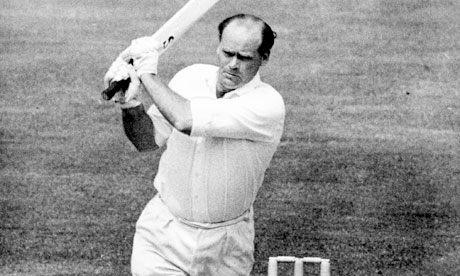
Here is a treat for cricket lovers, a book that meets the challenge set by CLR James in his celebrated reworking of Rudyard Kipling's line about England: "What should they know of cricket who only cricket know?" The highest compliment I can pay Guy Fraser-Sampson is to say that, while I was reading Cricket at the Crossroads, I kept wondering why no one had thought of writing such a book before.
Parts of it have been written before. The D'Oliveira affair was the subject of an excellent book by Peter Oborne; and many of the leading players of the decade covered by this book have written (or had ghost-written) accounts of the controversies in which they were involved. But no one before Fraser-Sampson has put it in the socio-political context of the time.
From a cricketing point of view, the years 1967-77 were hardly the most exciting, though they featured some great cricketers – none greater than the West Indian all-rounder Sir Garry Sobers. A defensive mindset, slow over rates and even slower scoring meant that far too many Test matches ended in draws. Fraser-Sampson's achievement is not just to make the cricket seem more exciting than much of it was but also to make what was going on behind the scenes, between the players and MCC/Test and County Cricket Board administrators, equally, if not more, gripping.
The period goes from the captaincy controversy surrounding Brian Close, through the South Africa apartheid saga and the introduction of one-day internationals, up to the players' revolt over pay, which – combined with the media war between Kerry Packer and the Australian Broadcasting Corporation – led to the defection of almost all the international stars to Packer's World Series Cricket. Fraser-Sampson has interviewed several survivors from that era; he also uses the memoirs of John Snow and Derek Underwood, as well as Colin Cowdrey and Raymond Illingworth, to good effect. Though far from impartial, he tries to present the motives of those of whom he is most critical in the best light.
The nub of the book is the time-honoured (or dishonoured) English class system. In cricket, the divide between Gentlemen and Players – with annual matches between the two, and initials on scorecards coming before or after your surname according to whether you were an amateur or a professional – survived until 1962 and in spirit for a good deal longer. It reflected other social divisions, such as the one between officers and other ranks and the domestic upstairs/downstairs one, as well as sociogeographical ones between north and south and Brits and foreigners. Fraser-Sampson shows how these all came under challenge during a period of social change.
There is no doubt which side he is on. Despite his double-barrelled name, he is batting for the Players. The Yorkies Close and Illingworth (though not Boycott, who is a law unto himself) are the book's heroes, with Cowdrey, Peter May and the MCC mafia pretty much cast as villains.
Yet even Cowdrey, who emerges badly from both the D'Oliveira affair and the captaincy rivalry with Illingworth, is praised for his courage in coming out of retirement to face Dennis Lillee and Jeff Thomson at their most aggressive. Indeed, the most interesting part of the last chapters deals with the latterday bodyline bowling of these two Australians, followed by the quartet of West Indian fast bowlers introduced under Clive Lloyd's captaincy, and the pusillanimous response to the non-stop barrage of bouncers on the part of umpires and the MCC.
The style of Fraser-Sampson's writing is reminiscent of the batting of Ian Bell rather than Boycott – free-flowing, occasionally slapdash, but always lively and entertaining. If I have a criticism, it is over the ending, which does not quite fulfil the promise of the early chapters. The first three paragraphs of the epilogue raise expectations that it will address the question of where we are now in relation to the crucial issues discussed in the book.
Alas, Fraser-Sampson veers off into an account of Peter Hain's experiences after the "Stop the Seventy Tour" campaign in which he took such an active part, and ends with a brief résumé of the subsequent lives of his Gentlemen and Players.
Interesting though these diversions are, they are no substitute for a trenchant analysis of cricket politics since the "dark ages", which the word crossroads in the title cries out for.

